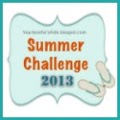This summer, we are being intentional about spending just a little bit of time doing some things that can make a big impact on our classroom. Join us as we try to create a stress-free school year! Did you miss the first part of this series? Check it out Let's Get Started and Goal #1, Goal #2, Goal #3, Goal #4, and Goal #5.
The start of the year is just around the corner (please don’t
have a panic attack!)
We've been pretty productive this summer. We've enlisted student help, decluttered our room, brought materials home to plan with, planned out our entire school year on a calendar, and created Pinterest boards so we could collect teaching ideas.
Now it's time to get down to the nitty-gritty of teaching: lesson planning!
Here's our goal for this week:
Plan out our lessons for the first three weeks of school.
There are a few reasons why doing this now will help us:
1. We will have a peace of mind as the school year
approaches just knowing that we are set for 3 weeks.
2. Instead of devoting precious teacher work days to just
trying to ‘get through the first week of school,’ we can focus on setting up
our rooms, doing the ‘extras’ we always wished we had time to do (like writing
a welcome postcard to each of our students), and actually going home to enjoy
the last few summer evenings with our families.
3. Knowing what you are doing for the first few weeks will
allow you the time to copy the pages and collect the matierals you need for
each lesson (you know, instead of doing it the night before- or morning of.)
And for those of you who think you’ll have enough time to do
this during teacher work week….why don’t you just try it now, just for kicks. Then, if you do find yourself with some extra time on your hands, just go ahead
and start planning week 4 and beyond. Wouldn’t that feel good?! :)
Okay, onto our lesson planning.
Step 1: Grab all
those materials we
collected at the end of the school year and brought home. Pull up those Pinterest boards you created
which are now chock full of fantabulous ideas!
(Side note: I thought for SURE fantabulous was not a real
word, but it’s in my spellchecker. Whadayaknow.)
(Side note #2: Apparently ‘whadayaknow’ is NOT in my
spellchecker. Heehee.)
Step 2: Take it
one subject at a time. Use a scrap sheet of paper to jot down the topic you are
going to cover on each day over the first 3 weeks. Under each day, make a quick note of any
resources or ideas you have for that particular lesson. There’s not really a
science to this, we’re just brainstorming people J
Step 3: Use
whatever format you’re familiar with to create a more detailed lesson for each
day. I like to type these up as it’s quicker for me to type that write. Typing
it also allows me to pull it up next year and tweak my lessons instead of
rewriting everything from scratch.
Step 4: Do this for each new subject until you’ve completed
your planning.
Bonus Points if you make a ‘to do’ list for each week. Write
down what needs to be copied, what
materials need to be collected, or what prep work needs to be one.
Whew! That’s it for our Summer Challenge! I hope that you
were able to get something out of it that will help the beginning of your school
year start off on the right foot.
I've enjoyed going through it with you! Don't worry though, I will be right here throughout the entire school year, sharing freebies, tips and tricks for creating a successful classroom.
And who knows? Maybe by next summer you'll have had enough time to recover from this challenge...just in time to do another one! ;)
Just joining us for the Summer Challenge? Don’t worry! You still have time to jump in with both feet! Here are the links to the mini-challenges we’ve accomplished over the last few weeks:











